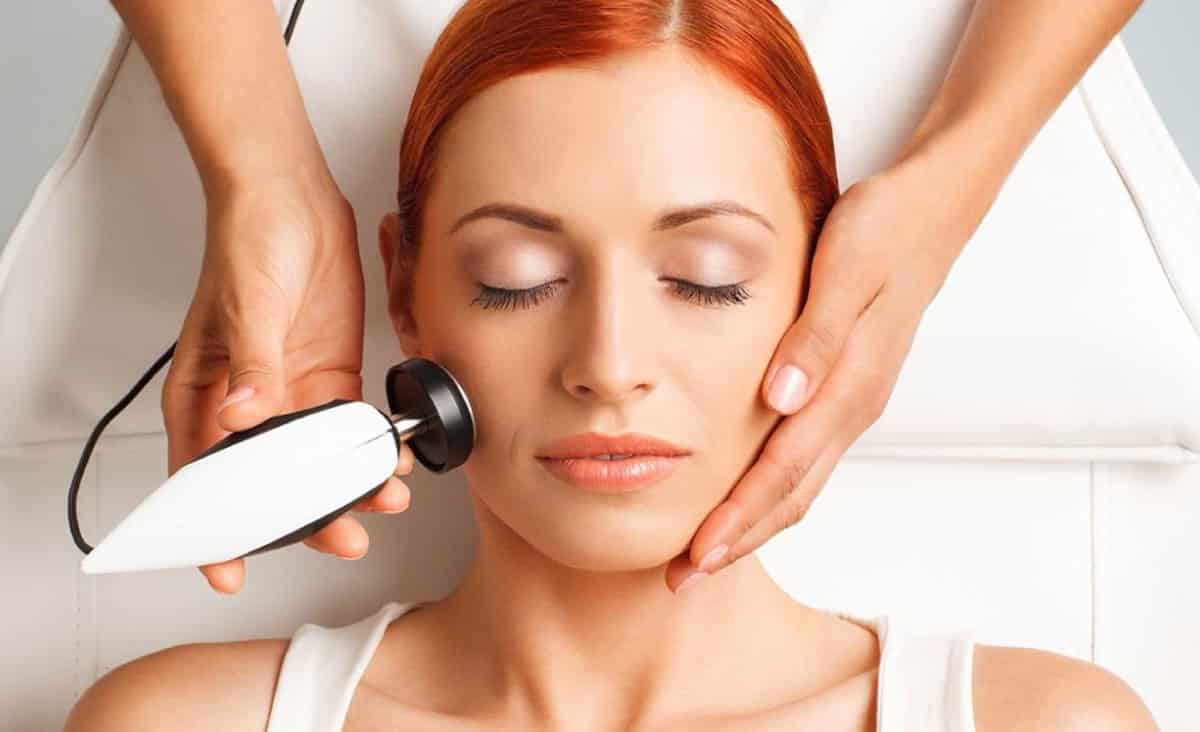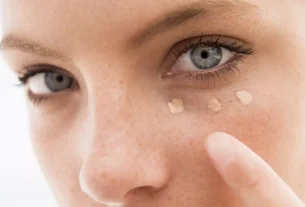Radiofrequency on the face is a procedure that uses equipment with a heat source to stimulate the production of collagen in the skin.
An option highly recommended by beauticians and dermatologists to delay the signs of aging is radiofrequency on the face.
This is an aesthetic treatment that uses a device with a heat source can act on the skin to stimulate collagen production. Therefore, improving skin elasticity and hydration, as well as correcting expression lines. Furthermore, it is a non-invasive, safe procedure with satisfactory resultsas it increases blood circulation and keeps the skin firm and rejuvenated.
However, to ensure the safety of the procedure, it must be performed by a dermatologist or beautician specialized in radiofrequency. This is because it is done incorrectly and can result in burns to the face.
Anyway, below we will better understand how radiofrequency works on the face, its benefits and who it is recommended for.
What is radiofrequency on the face for?
Radiofrequency on the face is main purpose to combat the first signs of facial aging. Therefore, it can be done in the areas around the eyes and mouth, on the forehead, cheekbones, chin and jowls. These are areas where the skin tends to become more flaccid over time.
Therefore, it is recommended for treat sagging skin, which can give a tired appearance and even change the contour of the face. Also wrinkles and expression lines, which are so uncomfortable for most people. See here how wrinkles form.
Furthermore, it can help in the treatment of acne scars. Radiofrequency has several purposes, in addition to the face, This procedure can also be done on other parts of the body, such as thighs and belly, as it can also be recommended to combat cellulite and localized fat. In fact, also get to know cryofrequency, another treatment recommended for getting rid of fat.
Who can do it?
In general, the Radiofrequency on the face can be done on all skin types and on healthy, adult people. Furthermore, to carry out the procedure the skin must be intact, that is, without wounds or infections.
So, she is Recommended mainly for those who want to eliminate expression lines, which begin to appear around the age of 30 or the most profound, common at the age of 40. In addition to combating the signs of aging, this type of treatment can also be recommended for people with acne scars. Check out 8 ways to prevent acne scars here.
Finally, for people who have a double chin that bothers them a lot, radiofrequency on the face may also be indicated. This is because it helps with the production of collagen in the region, consequently increasing the firmness of the facial skin and disguising the volume of the double chin.
Preparation for radiofrequency on the face
Although it is a relatively simple procedure, performing radiofrequency on the face also requires some prior care. Such as:
- Avoid consumption of alcoholic beverages in the days leading up to the session.
- Prepare to peel, using facial moisturizers for 6 weeks before the procedure.
- On the day of the session, do not use makeup or creams on your face.
- Furthermore, you cannot shave or wax the area on the day of the session.
- Not case of history of cold soresnotify the professional responsible for the procedure.
- Treatments like peeling or laser on the face should be avoided at least two weeks before doing radiofrequency on the face.
Take the opportunity to check out everything about peeling, from the benefits to the contraindications.
How is the procedure performed?
As previously stated, this type of procedure must be carried out by a dermatologist or beautician specialized in radiofrequency on the face. So, because it is something Simple and painless, no need for anesthesia.
The procedure works with the radiofrequency equipment emitting electromagnetic waves that go beyond the skin, reaching the fat layer, located between the skin and the muscle. In this way, it increases the temperature of the area, which also increases blood circulation and tissue oxygenation. As a consequence, stimulates the formation of collagen fibers, which provide firmness and support to the skin.
The results do not take long to appear and can be seen within 3 days after the first session. Furthermore, they are progressive, meaning the more sessions, the better the results.
How many sessions are needed?
The amount of session varies from patient to patient, because each case is different. However, in general, at least 3 sessions are recommended, which must be carried out at an interval of at least 15 days and a maximum of 30.
Then, From the minimum sessions, the professional can observe how the skin reacted treatment and whether more sessions should be performed to achieve the result desired by the patient. In other words, to eliminate the deepest wrinkles.
Therefore, After the patient reaches their goal, they may be assigned maintenance sessions every 3 or 4 monthsjust to maintain the results.
Post care
After carrying out radiofrequency sessions on the face, there are some precautions that the patient must follow. Firstly, it is recommended use of sunscreen daily, reapplication when necessary. In fact, learn how to choose the best sunscreen for you. And also drink lots of water, at least 2 liters to keep your skin hydrated.
Furthermore, you must maintain daily skin care. In other words, use anti-wrinkle cream daily and take hydrolyzed collagen. All of this will help you get the best results possible.
What are the risks of doing radiofrequency on the face?
Despite being considered a safe procedure, It still has its risks. Even more so on the face, which is one of the most sensitive areas of the body and at greatest risk of burns.
Then the equipment must be handled on the skin quickly and with circular movements. The professional must constantly check the skin temperature, so that it does not exceed 42 degrees. This is because higher temperatures can cause burn marks on the skin.
Finally, in the event of an accident and If there is any burn on the skin, the recommendation is to treat the affected area with burn creams. In addition, of course, only continuing with radiofrequency on the face after the skin has completely recovered.
Who is it not recommended for?
Radiofrequency on the face cannot be done by some people with specific conditions. Such as, clotting problems, diabetes, Cushing’s syndrome or who have taken Roaccutane in the last 2 months. Furthermore, the procedure is also not recommended in the following cases:
- Pregnancy;
- People who use corticosteroid-type medications;
- When the person has a pacemaker;
- On skin with wounds or infections;
- Areas with tattoos or permanent makeup;
- When the person uses a metal prosthesis in the facial bones or metal fillings in the teeth;
- In patients with autoimmune diseases that leave the immune system weak;
- Change in sensitivity in the face, not differentiating between cold and heat.
When doing radiofrequency on the face, if you have any of these conditions, You may run the risk of developing a fever, worsening the infection, getting burns or even not achieving the expected result.
Anyway, take the opportunity to also check out homemade cream options for wrinkles.
Sources: Tua Saúde Mitras Aesthetics Beauty Manual
Bibliography:
- GENTILE, Richard D.; et al. Radiofrequency Technology in Face and Neck Rejuvenation. Facial Plast Surg Clin North Am. 26. 2; 123-134, 2018
- EL-DOMYATI, Moetaz; et al. Radiofrequency facial rejuvenation: evidence-based effect. J Am Acad Dermatol. 64. 3; 524-535, 2011

Sign up for our newsletter and stay up to date with exclusive news
that can transform your routine!
Warning: Undefined array key "title" in /home/storelat/public_html/wp-content/plugins/link-whisper-premium/templates/frontend/related-posts.php on line 12
Warning: Undefined array key "title_tag" in /home/storelat/public_html/wp-content/plugins/link-whisper-premium/templates/frontend/related-posts.php on line 13




